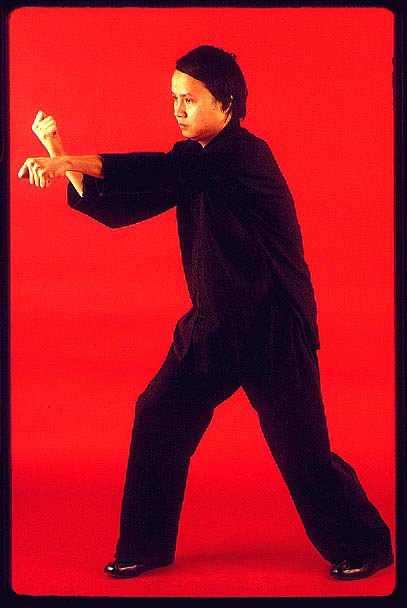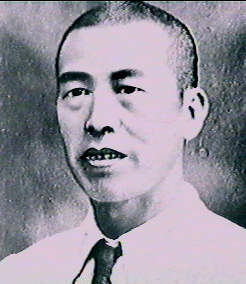
|
The Bach Mi (Bak Mei or P'ei Mei, style of "white eyebrows") belongs to the family of southern styles. The name comes from the peculiar characteristic of its founder, who had white hair and eyebrows. |
The creation of the Bach Mi style is attributed to a Taoist monk, Chu Long Tuyen,
who lived in the Chinese region of Sichuan around the half of XVII century; he had white hair
and eyebrows and so he was called Bach Mi Dao Nhan, "the Taoist man with white eyebrows".
The Bach Mi was, for a long time considered a "damned" style, because, according to the
tradition, during the Mancese dynasty of Ching, some practicing of the founder Master,
or Bach Mi himself, betrayed the cause of Ming, for the Manciù.
The Bach Mi style was practiced for a long time only by a restricted number of Taoist and
Buddhist monks. But one day, pressed from a young monk that was his pupil, M° Phap Van
Thien Su (monk Fah Yuen), decided to accept as practicing a lay, Truong Le Tuyen
(Chang Lai Chuen), expert of the Long Hing school (dragon style).
M° Truong Le Tuyen, after three years of study on Ngor Mei mount, learn in a superb
way the Bach Mi and he was entrusted the task to diffuse this style in South China.
 |
The Bach Mi style arrived in Vietnam thanks to a pupil of M° Truong Le Tuyen. In 1955, M° Tang Khai Minh, called Tang Hue Bac, moved to Cholon, the Chinese district of Saigon (Ho Chi Minh City), where initially the Bach Mi was taught only in the Chinese community. Among the practicing of M° Tang Hue Bac there was M° Diep Quoc Luong, also known as Tai Chuc Cam (big cock) for his height and for his irascible temperament. After the death of M° Tang Hue Bac some of his practicing started to teach Bach Mi also to some Vietnamese people, the ones that were already introduced in the world of Chinese martial arts like M° Tran Ngoc Dinh, who was direct pupil of M° Tai Chuc Cam. |
Bach Mi style is very different from all the other styles: the typical position of the practising, is almost frontal, with the posterior leg bent and the shoulders curved forward; the chest is compressed inside, while the belly is pushed outside. It is possible to define this style as a style of "short hand", because the hand is never retracted to the side, but the force is expressed in the short distance, in the moment of contact with the enemy. A typical attack of this style, called "phoenix eye fist" (Phuong Nhan Chuy), consist of hitting the target with the central knuckle of the index finger folded on the thumb.
The original program of the school of M° Tang Hue Bac consisted of nine quyen (forms) with open hands. As in Vietnam there were other Masters of Bach Mi like Lai Quy and Huynh Thieu Nong, the complete program of the style includes eighteen forms with open hands, forms with long stick (Con) and with butterfly-sward (Dao).